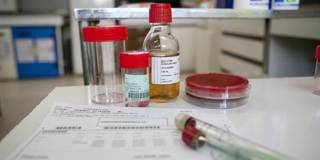From 2000 to 2014, better diagnosis and treatment of tuberculosis saved some 43 million lives. But there is a long way to go before the death toll is reduced to zero – a goal that will require treating inactive infections and raising the living standards of at-risk populations.
SEATTLE – Humans have been battling tuberculosis since the Stone Age. But only in the last century has real progress been made against the disease. A vaccine, first used in humans in 1921, is still in use around the world today. And a series of antibiotics, beginning with streptomycin in the 1940s, has proven effective in treating infections.
Since 1990, TB’s annual death toll has been cut nearly in half. From 2000 to 2014, better diagnosis and treatment saved some 43 million lives. Nonetheless, progress has slowed to a crawl, suggesting that the battle is far from over. The annual decline in cases over the past decade has been a mere 1.65%; in 2014, TB killed 1.5 million people.
Meanwhile, strains of the disease are developing resistance against treatment. The misuse and mismanagement of antibiotics has resulted in multidrug-resistant TB. These strains must be treated with second-line medications, which are more expensive and often cause worse side effects. Strains that are resistant to second-line drugs, known as extensively drug-resistant TB (XDR-TB), have also appeared.

SEATTLE – Humans have been battling tuberculosis since the Stone Age. But only in the last century has real progress been made against the disease. A vaccine, first used in humans in 1921, is still in use around the world today. And a series of antibiotics, beginning with streptomycin in the 1940s, has proven effective in treating infections.
Since 1990, TB’s annual death toll has been cut nearly in half. From 2000 to 2014, better diagnosis and treatment saved some 43 million lives. Nonetheless, progress has slowed to a crawl, suggesting that the battle is far from over. The annual decline in cases over the past decade has been a mere 1.65%; in 2014, TB killed 1.5 million people.
Meanwhile, strains of the disease are developing resistance against treatment. The misuse and mismanagement of antibiotics has resulted in multidrug-resistant TB. These strains must be treated with second-line medications, which are more expensive and often cause worse side effects. Strains that are resistant to second-line drugs, known as extensively drug-resistant TB (XDR-TB), have also appeared.